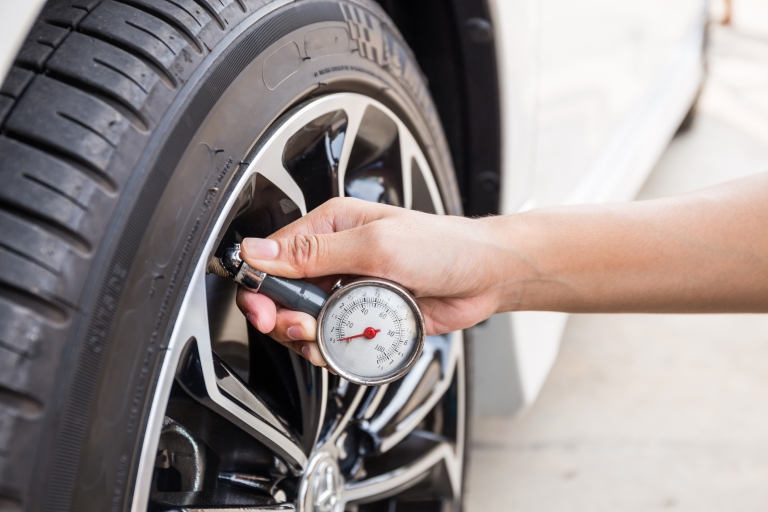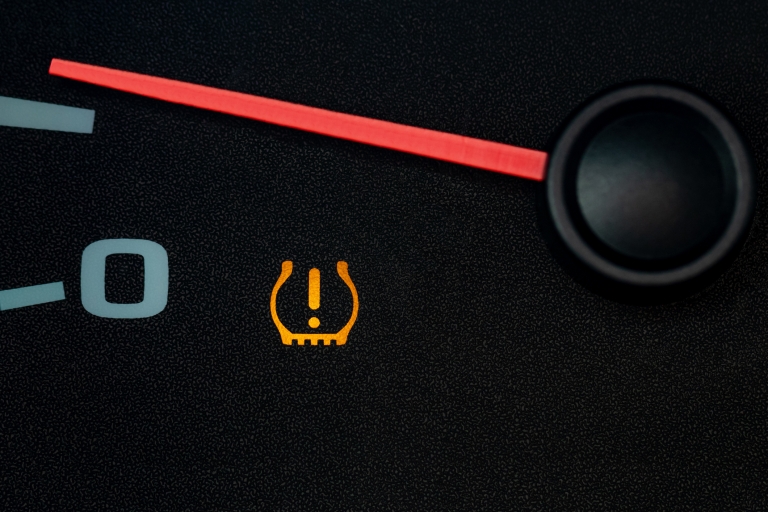
The Importance of Tire Pressure: Safety and Fuel Efficiency

In the early 2000s, the automotive world was rocked by a major controversy involving the Ford Explorer and its Firestone tires. Numerous reports emerged of tire tread separations leading to rollovers and fatal accidents. The crisis not only led to a massive recall but also put a spotlight on the critical importance of tire safety, particularly tire pressure. While the Ford-Firestone issue was multifaceted, involving design choices, manufacturing processes, and other factors, it underscored the need for drivers to be informed about their vehicle's tire health. Tire pressure, often overlooked, plays a pivotal role in ensuring a vehicle's safety and fuel efficiency. This article delves deep into the science behind tire pressure, its impact on driving safety, and how it can affect your vehicle's fuel consumption.
The Science Behind Tire Pressure
Every vehicle was designed for a tire with a designated load rating, and an optimal inflation level for that tire. Usually, the recommended inflation pressure is on a sticker on the driver's door sill, placed there by the vehicle manufacturer; this information can also be found in the vehicle's manual. Maintaining this optimal level ensures that the tire maintains the right amount of contact with the road, providing the necessary load capabilities, traction, and handling. When a tire is underinflated, its contact patch (the portion of the tire touching the road) increases. This might seem beneficial for grip, but it comes with its own set of problems, including reduced capacity for load.
- Rolling Resistance and Fuel Efficiency:
- What is Rolling Resistance? It's the force that opposes the motion of a wheel rolling on a surface. Think of it as the friction between the tire and the road.
- Impact on Fuel Efficiency: An underinflated tire increases the rolling resistance. More energy (fuel) is required to overcome this resistance, leading to reduced fuel efficiency. A study from Oak Ridge National Laboratory found that vehicles with tires inflated at 75% of the recommended pressure saw a 2-3% drop in fuel economy. This drop was even more pronounced, 5-10%, for tires inflated at just 50% of the recommended level.
- Braking and Safety:
- Braking Distance: An increase in rolling resistance, as seen in underinflated tires, can reduce the braking distance. While this might sound like a good thing, it's not always the case. The reduced braking distance is a result of increased friction, which can lead to uneven tire wear and reduced tire lifespan.
- Handling and Control: Underinflated tires can also affect the vehicle's handling. The increased contact patch can lead to unpredictable vehicle behavior, especially in wet conditions or during high-speed maneuvers.
- Load Capacity:
- Impact on Vehicle Performance: Tires are designed to carry a specific load, and this load capacity is directly related to tire inflation. An underinflated tire can't carry its designated load effectively, which can lead to tire failure, especially when the vehicle is heavily loaded.
- Safety Concerns: Carrying loads heavier than what the tire is rated for, especially when the tire is underinflated, can lead to overheating and potential blowouts. This poses a significant safety risk, especially at high speeds or during long drives.
- Vehicle Stability: Proper load distribution and tire inflation are crucial for vehicle stability, especially in larger vehicles like SUVs and trucks. An underinflated tire can compromise this stability, making the vehicle more prone to rollovers or loss of control.
Real-World Implications
The significance of maintaining the right tire pressure extends beyond just the mechanics of a vehicle. It has broader implications that affect drivers, passengers, and even the environment.
1. Safety on the Road:
- Accidents and Fatalities: The National Highway Traffic Safety Administration's study in 2001 highlighted a concerning trend. More than one-quarter of passenger cars had at least one tire underinflated by 8 psi or more. Such widespread underinflation can lead to overheating of tires, increasing the risk of a blowout. Compromised vehicle handling due to underinflated tires can also make accidents more likely, endangering lives.
- Uneven Tire Wear: Underinflated tires can lead to uneven wear, particularly along the edges. This uneven wear can reduce the tire's lifespan and can also lead to reduced grip on the road, especially in wet conditions.
2. Economic Impact:
- Increased Fuel Expenditure: Reduced fuel efficiency due to underinflated tires means more frequent trips to the gas station. Over a year, this can lead to significant additional fuel costs for drivers.
- Tire Replacement Costs: Tires that are not maintained at the correct pressure tend to wear out faster, leading to more frequent replacements and increased costs for vehicle owners.
3. Environmental Concerns:
- Higher Carbon Footprint: Vehicles with underinflated tires consume more fuel, leading to higher carbon dioxide emissions. This not only contributes to global warming but also affects air quality.
- Waste: Premature tire wear due to improper inflation leads to more tires being discarded, adding to environmental waste.
4. Operational Implications for Fleets:
- Downtime and Maintenance: For businesses operating vehicle fleets, improper tire maintenance can lead to increased downtime due to tire-related issues. This can disrupt operations and lead to financial losses.
- Reputation: Companies, especially those in the transportation sector, risk damaging their reputation if involved in accidents due to tire failures. Proper tire maintenance is not just about cost savings; it's about ensuring the safety of customers and preserving brand trust.
Recommendations for Drivers
- Regular Checks: Make it a habit to check your tire pressure at least once a month. Many modern vehicles come equipped with tire pressure monitoring systems (TPMS), but a manual check with a tire gauge can ensure accuracy.
- Understand the Optimal Pressure: Always refer to your vehicle's manual or the sticker inside the driver's door to find the recommended tire pressure.
- Consider the Environment: Tire pressure can drop in cold weather. If you live in a region with significant temperature fluctuations, account for this when checking and adjusting tire pressure.

Tire pressure is not just about prolonging the life of your tires; it's about ensuring the safety of everyone on the road and optimizing fuel efficiency. By understanding its importance and taking proactive steps, drivers can ensure a safer, more efficient, and more economical driving experience.
